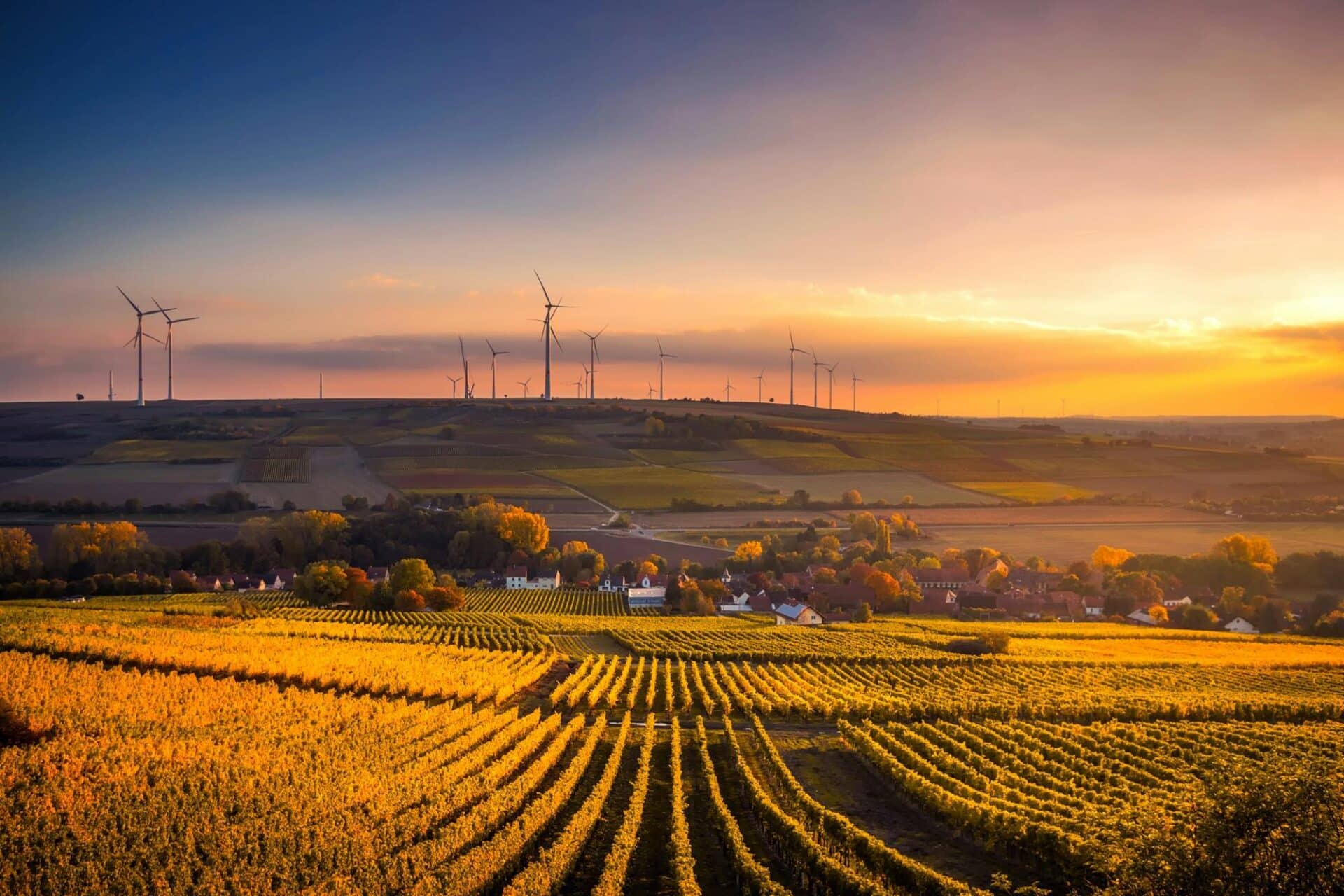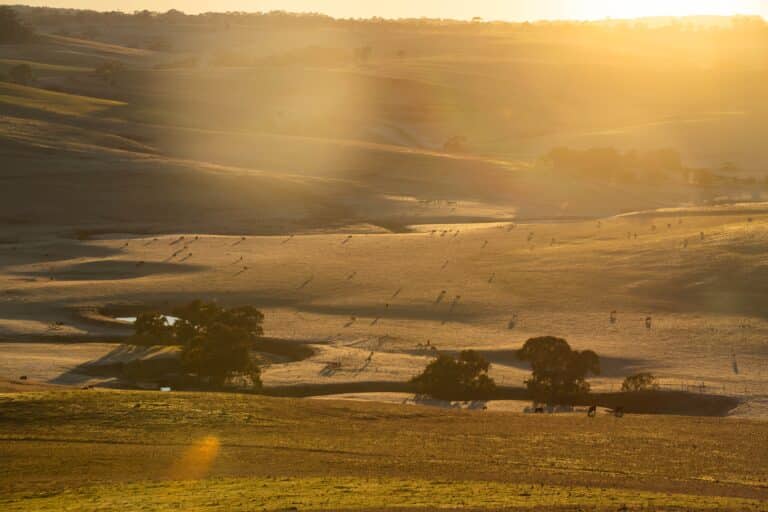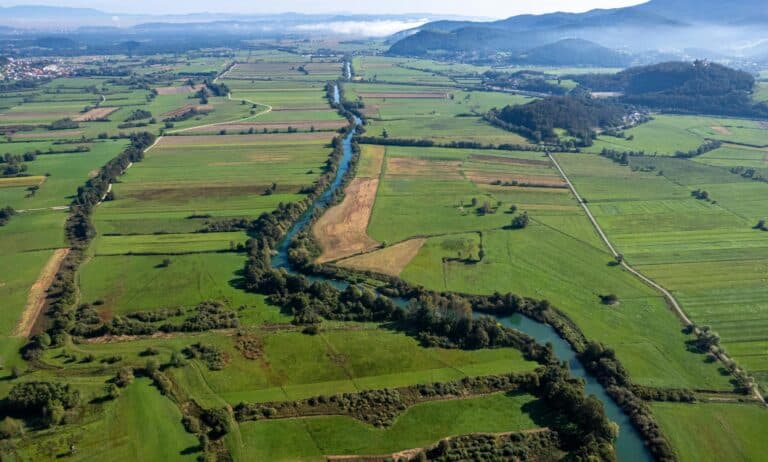Are you the type of person who grew up around farms? Even if your parents didn’t own one, maybe you worked on your aunt and uncle’s during the summer. Or maybe your neighbors let you pocket some extra cash by helping them take care of their barn animals.
Maybe now, you’re wondering—should you start a farm? But here’s the thing: whether you have one year of experience or 20, you don’t have to jump in headfirst and start building a farm with your new land. Instead, think about this: can you lease land for farming? (Yes!)
What’s the value of deciding to lease land for farming? How do you find a rentable property? And what goes into a property lease, anyway? Throughout this guide, we’ll answer all those questions and more, helping you gain a full understanding of the parcel leasing process.
Why Should You Consider Leasing Land for Farming?
What is a land lease and why should you choose that over buying land, you may ask? As simple as that may sound, leasing farm land can often be a better option for new and future farmers. That makes it crucial to understand the benefits of leasing farm plots—to know if it’s the right option for your needs.
Here are some of the top advantages of renting agricultural land:
- Increased capital for other needs – When you lease property, you can use the savings on acreage costs for other purchases to start your farm, such as livestock, crops, and machinery.
- Enhanced flexibility – Many property rental agreements are short-term contracts, meaning you can opt-out when renewal comes up. This option is ideal for those who expect to need a different property to accommodate their business size or to relocate to a desired location.
- More affordable options – Leasing can put your farming dreams within reach by providing a more affordable way to find land. These less costly options often benefit beginners and farmers looking to expand their agricultural production and operations.
- Improved opportunity to gain experience – Before buying a lot of acreage, new farmers can rent leased land to get a feel of the experience and decide if they want to continue on this path.
These benefits help make leasing a viable option for many people, including those taking their first steps into farming or those who want to add more facets to their agricultural production business.
Types of Farm Land Leases: Which One Is Right for You?
If the benefits of leasing farm plots have caught your attention, keep trekking down this dirt road. The next road sign you’ll come across is about common lease types (or how your lease agreement with the farmland owner works).
Here are some terms to familiarize yourself with before signing a lease agreement:²
- Cash lease – Cash leases are one of the most popular options for agricultural tracts. They can either be short- or long-term (over three years). These leases also provide moderate control over the infrastructure and low-to-moderate upfront costs. You’ll pay a cash sum per acre or a lump sum to use the whole property.
- Flexible lease – You and the landowner may opt for a flexible lease, ranging from one to several years. It also provides moderate control over the infrastructure, but upfront costs can be more variable.
- Crop share lease – With a crop-share lease, you (the tenant) will pay the farmland owner a specific percentage of the harvested crops. You make this payment in exchange for parcel use and potentially money toward your input costs.
Of course, there are other options that you may want to consider, including farm incubators, land trust rentals, and lease-to-own. The most crucial part of the process is selecting the one that best fits your needs, from property use to budget.
How to Lease Farm Land: Finding Properties
Now that you understand the basics about renting ranch plots and lease types, it’s time to get into the nitty-gritty—how to lease land for farming. Refuel for the journey ahead with these resources for looking for rentals:
- Online platforms – Many online platforms make finding the acreage of your dreams easy. Start by entering a place of interest and use filters to find the property that speaks to you.
- American Farmland Trust – The American Farmland Trust offers a comprehensive guide that can help walk you through the property leasing process.
- Organizations – Another option is to connect with groups, such as Farm Link, the National Farmer’s Union, the American Farm Bureau Federation, or the state’s agriculture department.
- Other farmers – You could also network with people in your desired area to search for leads. In some cases, retiring farmers who aren’t passing their property on to another person may want to enter into a lease-to-own agreement with you.
- Transition Incentives Program (TIP) – TIP is a program from the Farm Service Agency that encourages owners to pass their land to a beginning farmer, military Veteran, or socially disadvantaged person. TIP occurs during the period when the farmer’s Conservation Reserve Program contract ends.
While these are some of the best places to search for leasable farms, there are some other things you’ll want to consider before making a decision.
What to Consider Before Leasing Farm Land
Before leasing any plot, you must understand what you’re getting into—all the ins and outs of the property and what you’re allowed to do there. There are the more obvious factors, like permitted land use, but you should also know about:
- Soil quality
- Property boundaries
- Water access
- Stewardship or conservation requirements
- Deed restrictions
- Zoning regulations
- Grain marketing (the ability to sell crops at a profit)
- Relationship expectations between landowner and lessee
You need to have a clear understanding of everything you possibly can about the property, owner, and expectations so that everyone is on the same page before signing the farm land lease contract.
Understanding Lease Agreements: Key Terms to Know
What goes into a land lease? Much like a car, home, or apartment lease, you must understand some critical information before signing your name. Examples of what to look for in your lease agreement include:
- Property description
- Rental amount
- Lease duration and renewal options
- Utilities
- Termination conditions
- Permitted and prohibited uses
- Insurance requirements
- Taxes
- Landowner notice of entry requirements
- Responsibilities for maintenance, repair, or improvements
While you can review the lease yourself, having a land professional on your side can be helpful to ensure you’re getting a good deal.
Negotiating a Fair Farm Land Lease
When you receive a lease offer, you may need to negotiate an agreement that benefits both parties. But how much is land typically leased for?
Here are some factors to consider when deciding whether to negotiate or accept a land lease arrangement:
- A rental rate that meets your and the owner’s needs and desires
- Inclusion of any buildings or other infrastructure
- The property type
- Permitted usage of the property and structures
- Soil quality
With that in mind, a “fair” rental rate can vary from place to place, so there’s no one-size-fits-all approach to negotiation. To help you understand the going rate in your area of interest and if you’re receiving a fair deal, consult with local farmers, land pros, or Cooperative Extensions.
Making the Most of Your Leased Farm Land
When you consider the logistics of leasing farm plots, you’re essentially entering into a partnership with the farm owner. And what does that mean? You need to take care of the land with property management and consistent communication. Try these methods:
- Goal-setting and communication – You and the farm owner should work together to decide what you want to achieve with the farm and how. Find out if they have specific requests, like organic or sustainable agriculture practices. Continue these conversations throughout the lease duration.
- Honesty and integrity – If you have any questions or concerns, communicate them with your landlord right away. Did an issue arise on the farm? Did you make a mistake somewhere? Regardless of the situation, being open and honest with the owner is crucial to help build trust.
- Planning and management – Develop a plan for maintaining the soil, crops you’ll plant, and anything else you want to do on the property. Will you engage in crop rotation or use only non-toxic pesticides? What will you plant and when? Create a detailed plan and share it with your landlord to keep them informed about your practices, goals, and achievements.
Remember that, ultimately, you’re working on someone else’s parcel. The key to making the most of your experience as a tenant farmer is open communication and relationship longevity.
Exploring Farm Properties? Start Your Search with the Right Tools
Whether you’re dreaming of starting a farm or looking to grow your agricultural business, finding the right property is key. Land.com offers tools to help you explore available acreage across the country, with detailed listings and filters that make it easy to narrow down your options.
Want expert insights? You can also connect with local land professionals who specialize in rural real estate and understand the needs of farmers and growers. From exploring new areas to getting guidance on your land journey, the right support can make all the difference.
Sources:
Penn State Extension. Owning and Leasing Agricultural Real Estate. https://extension.psu.edu/owning-and-leasing-agricultural-real-estate
Orange County Land Trust. Farm Leasing: A Guide for Farmers and Landowners. https://farmlandinfo.org/wp-content/uploads/sites/2/2019/09/Farm-Leasing_A-Guide-for-Farmers-and-Landowners.pdf
Pasa Sustainable Agriculture. Farmland leasing & purchasing arrangements. https://pasafarming.org/resources/farmland-leasing-purchasing-arrangements/
American Farmland Trust. Find Farmland. https://farmlandinfo.org/find-farmland/
American Family Insurance. How to Find Farmland for Rent. https://www.amfam.com/resources/articles/on-the-farm/renting-farm-land
USDA Farm Service Agency. Transition Incentives Program. https://www.fsa.usda.gov/programs-and-services/conservation-programs/transition-incentives
Center for Agriculture & Food Systems. Questions To Consider Before Signing A Lease. https://farmlandaccess.org/questions-to-consider/
Grain Basis. Leasing Farmland, A Comprehensive Buying Guide For the Beginner Farmer. https://grainbasis.com/leasing-farmland/
American Farmland Trust. Retain and Improve Rented Land. https://farmlandinfo.org/retain-and-improve-rented-land/
American Farmland Trust. Elements of a Good Farm Lease. https://farmlandinfo.org/wp-content/uploads/sites/2/2019/09/FarmlandAdvisors_Elements-of-a-Good-Farm-Lease_10-2015.pdf
NC State Extension. Leases and Renting Farmland. https://ncfarmlink.ces.ncsu.edu/leases-renting/



